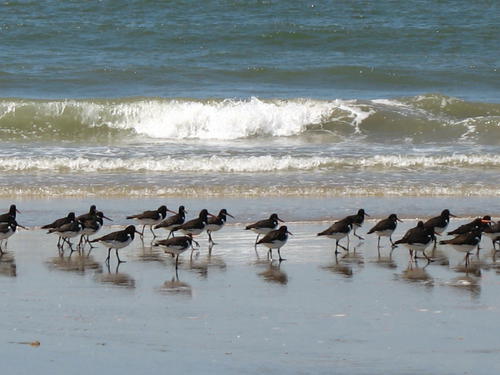Doñana National Park
Doñana National Park in Andalusia occupies the right bank of the Guadalquivir river at its estuary on the Atlantic Ocean. It is notable for the great diversity of its biotopes, especially lagoons, marshlands, fixed and mobile dunes, scrub woodland and maquis. It is home to five threatened bird species. It is one of the largest heronries in the Mediterranean region and is the wintering site for more than 500,000 water fowl each year.
Doñana National Park in Andalusia occupies the right bank of the Guadalquivir river at its estuary on the Atlantic Ocean. It is notable for the great diversity of its biotopes, especially lagoons, marshlands, fixed and mobile dunes, scrub woodland and maquis. It is home to five threatened bird species. It is one of the largest heronries in the Mediterranean region and is the wintering site for more than 500,000 water fowl each year.
Long Description
The park and its buffer zones occupy the right bank of the Guadalquivir River at its estuary with the Atlantic. It is situated on quaternary deposits: mainly sand dunes and groups of shifting dunes, some of which move very rapidly. Major habitats consist of lagoons, marsh, fixed and mobile dune fields, scrub woodland and maquis. The faunal inventory includes 8 species of fish, 10 amphibian, 19 reptile, 30 mammal and 360 bird. The park supports important resident populations of the following threatened species: Spanish lynx, Adalbert's eagle, marbled teal, and white-headed duck. Black vulture and red kites are also present, as are large breeding colonies of waterfowl, herons, egrets and waders. It is the most important wintering site for waterfowl in Spain, receiving hundreds of thousands of visitors annually, and is a major stop-over on the route to and from Africa for migrating Palaearctic migrants.
In general the state of conservation of the park is satisfactory, but it does face numerous threats including its increasing isolation by agricultural development, tourism, poaching, over-grazing and illegal exploitation of crayfish. Doñana National Park has been a testing ground for conservation in Spain and has become very well known throughout Europe due to the controversies faced there and the innovative management approaches that have been taken. It is the only protected area that is not only a National Park but also a Ramsar site, a Biosphere Reserve as well as a European Community Special Protection Area. It is also known as the site which triggered the foundation of WWF in 1961.
Doñana has a known history of over 700 years. It was the favourite hunting reserve of Spanish kings such as Philip IV, Philip V and Alfonso XIII. It was owned by the Duchess of Alba and formed the backdrop of her portrait by Goya. The palace of Doñana remains as a testimony to this exalted past.
All Mediterranean wetland sites including Doñana have been exploited by humans since the beginning of civilization. Among the uses experienced in and around Doñana have been drainage of marshes and conversion to agriculture, grazing, fisheries, mineral and salt exploitation, hunting, harvesting of wetland vegetation, forestry plantations, use of pesticides, urban development, road construction and tourism. Although it has been affected by a number of human activities that have reduced its integrity, Doñana National Park is a resilient system and nature is still the dominant force. As the main threats have been averted and as restoration activities are under way, the future of the park seems assured. In the context of a crowded and long-inhabited continent, Doñana is one of the few national parks in Europe that can match the international significance met by parks in other parts of the world.
Source: UNESCO/CLT/WHC
Share Thread Share your opinion interested









EmoticonEmoticon